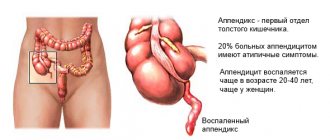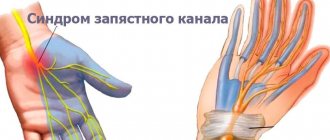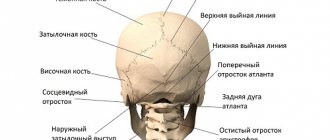The metacarpals represent the bony framework of the palm and are important to the function of the hand, connecting the bones of the wrist and fingers. Bone fractures can affect hand grip strength and movement. They are the result of high-energy injuries such as direct impact, motor vehicle accidents, and work-related injuries. Although sometimes a pathological fracture occurs due to minor trauma or stress, when there is an oncological lesion of the bone structure. But, nevertheless, fractures of the metacarpal bones can often be treated conservatively with the help of reposition and proper immobilization, and have a favorable prognosis.
The metacarpal bones are part of the group of small tubular bones of the human body. They have a base, a body and a head. In this regard, fractures of the head, neck (subcapitate), body and base are possible. The most common fracture is a fracture of the neck of the fifth metacarpal (Boxer's fracture).
There are also rare specific fractures of the metacarpal bones, named after the author who first described this fracture. However, these fractures deserve special attention.
In particular, the Bennett fracture and the more severe Rolando fracture. These two fractures are accompanied by subluxation of the first metacarpal.
Bennett's fracture is an intra-articular fracture of the base of the first metacarpal bone with subluxation of the base. Essentially this is a fracture-dislocation. It was first described by the English trauma surgeon Bennet in 1882. A fracture of the base of the metacarpal bone through the joint along the axis, resulting in displacement and subluxation in the joint.
Rolando's fracture is a comminuted (3 fragments) intra-articular fracture of the base of the first metacarpal bone with subluxation of the base. The fracture occurs due to a strong blow to the axis of the finger. Fracture of the base of the metacarpal bone through the joint along the axis and also across. And on the radiograph it resembles the letter U or T. Subluxation in the joint also often occurs.
If these fractures are not treated, the finger remains deformed, and later arthrosis of the trapezio-metacarpal joint, pain and limitation of movements will occur.
Prevalence (epidemiology) of metacarpal fracture
Fractures of the metacarpal bones and phalanges of the fingers account for approximately 10% of all fractures of the bones of the human body and approximately 30% - 40% of all fractures of the upper limb. In men, fractures of the metacarpal bones occur 3 times more often than in women.
People who engage in combat sports such as football, basketball, boxing, karate, etc. are much more at risk of getting a similar fracture. Everything is clear here - injuries, blows. But there are patients who received a fracture without much stress or trauma. Such fractures are called pathological. For example, there is an intraosseous tumor, benign or malignant, which weakens the structure and strength of the bone, and the patient does not know about it, since they are asymptomatic. And he learns about the pathology during an X-ray at the emergency room for a fracture. Sometimes fractures occur due to osteoporosis (weakening of bones due to decreased calcium levels). Most metacarpal fractures occur in the active and working population, especially young people and adolescents.
Rehabilitation
After the cast is installed, the person will have to live with an almost immobile arm for several months. Of course, this negatively affects the condition of the entire limb, and often the entire body. Blood circulation is reduced to a minimum, and it is the blood flow that is the main transport vector for nutritional components.
Muscle contractions, that is, physical exercise, help best. How to develop a hand without harming it? It is better to start the first training through passive movements, that is, it is necessary to contract different parts of the arm through willpower, and not through direct movement. After just a couple of days, you may notice slight fatigue in your hands, which indicates muscle function.
On average, a set of exercises can be like this:
- Clench and unclench your fist with force. Repeat this several times.
- Place your thumb and index finger together and relax the rest of your fingers.
- Connect all fingers, with the exception of the little finger, which must be set aside.
- Interlace the fingers of both hands, do this with some effort.
The simplest actions will also be useful: folding figures from matches, tying shoelaces. Once your bones have fully recovered, you can begin weight-bearing exercises to develop sufficient muscle strength.
Massaging the hand will help prevent contractures and difficulty moving the hand. You can contact a professional, but many patients perform simple movements at home. Stroking, rubbing and kneading are exactly what can improve capillary blood flow and tissue metabolism.
Structure and functions of the metacarpal bones of the hand
There are a total of 5 metacarpal bones on each hand. They have a tubular structure.
The bases of the metacarpal bones are cuboidal in shape, connecting through ligaments to the distal row of carpal bones.
The body of the metacarpal bone is slightly curved towards the palmar surface and resembles a rocker. Interosseous muscles are attached to the lateral surfaces of the body, which provide fine motor movements of the hand. In case of a transverse fracture of the metacarpal bone, the displacement is difficult to eliminate and maintain precisely because of these muscles, because they constantly pull the fragments onto themselves. The extensor tendons of the fingers are attached to the dorsal surface. The body of the metacarpal bone passes into the neck and then into the head, on which there is an articular surface for connection with the proximal phalanx of the finger. The weakest point of the metacarpal bone can be called the neck; it is at this level that most fractures occur, due to the anatomy and mechanism of injury.
The first metacarpal is unique in that it is shorter and wider than the others and has more extreme angles with the carpus, opposing the axes of the other bones, which characterizes the primary function of the first digit. The second and third metacarpal bones are most rigidly attached to the bones of the wrist with their base. In contrast, the fourth and fifth are more loosely attached and allow the hand to perform more movements and securely grip objects and tools of various shapes.
Complications of damage
Most often, with a fracture of the scaphoid bone, a false joint develops, which is associated with the characteristics of the blood supply. Proximal and distal fractures heal well. In the middle part, the blood supply is poor, which leads to the development of a pseudarthrosis. Also, the cause of complications may be an incorrectly applied bandage.
Complications can occur in a situation where a person does not see a doctor, mistaking the injury for a bruise. In such a situation, a fracture of the arm with a displacement at the wrist may heal incorrectly, and sometimes the neurovascular bundle is damaged.
Symptoms of metacarpal fractures
Metacarpal fractures usually occur after a fight, car accident, or fall. Less commonly, these are open injuries (circular saw, axe, production machine). Symptoms include:
- pain (most intense in the fracture area);
- edema;
- shortening of the finger;
- deformities (for example, lack of a “knuckle”);
- subcutaneous hemorrhage.
First aid to the victim
Some cases require first aid. Such injuries include open injuries with bleeding. The first step is to take measures to stop the bleeding and call an ambulance. Further hospitalization of the victim is carried out under the supervision of a traumatologist or other specialist.
https://youtu.be/LZ-bzaV59mc
With closed lesions, the injured arm must be immobilized to ensure that its mobility is limited. This is done in order not to accidentally touch the sore spot, and to avoid post-traumatic shock or loss of consciousness when damaged joints are displaced. The arm can be tied with any fabric available at hand. The main thing is that the fingers of the broken hand are bent.
Diagnosis of metacarpal fractures
Any significant hand injury requires examination by a traumatologist and radiography. The patient may think that this is a bruise, but there may be a fracture, for example, of the scaphoid bone, which can create a lot of problems. A simple x-ray will not take much time, but the patient will already know for sure whether it is a bruise or a fracture.
Questioning the Patient: Most fractures are a direct result of trauma. Complains of pain, swelling, limitation of movements, subcutaneous hemorrhage in the injured arm. Typically, the patient will clearly acknowledge the injury and explain how he received it. Based on this, the doctor can already guess the diagnosis and location of the fracture. The patient may also complain of numbness if the blood supply is disrupted due to compression of the vessels by edema after serious extensive trauma (compartment syndrome or compartment syndrome).
Examination by a traumatologist: examination may reveal visible deformities if the fracture is clearly displaced. If the displacement is small or not at all, the anatomy of the hand may be completely normal. Local swelling and pain on palpation (touch) will be in the projection of the fracture. Possible decrease in grip strength.
Also, during the examination, the doctor pays attention to possible rotation of the fingers (rotation around an axis). You can evaluate this moment by bending your fingers into a fist. The fingers should be lined up without turning around and the nails should be parallel.
Instrumental examination methods:
Radiography. To diagnose a fracture of the metacarpal bone(s), radiography is performed in three projections: direct (antero-posterior), lateral (sagittal) and oblique (3/4).
CT (computed tomography) is used in complex cases when the fracture is comminuted or intra-articular, as well as to confirm the diagnosis of fracture nonunion.
Rehabilitation period
Rehabilitation after a fracture of the fifth metacarpal bone involves maximum limitation of motor activity; patients are often prescribed anti-inflammatory and analgesic medications, chondroprotectors, vitamin-mineral complexes, and calcium.
Further rehabilitation measures aimed at functional restoration of the damaged bone begin, as a rule, after the plaster is removed (approximately 4–6 weeks after the injury).
The following physiotherapeutic procedures are recommended for patients:
- Magnetotherapy.
- UHF therapy.
- Warming up with a blue lamp.
Physical therapy exercises are of great importance. In addition, patients are recommended to regularly perform a special set of exercises aimed at developing motor activity and fine motor skills. Here's what you should do during the rehabilitation period:
- Sorting the grains
- Collecting models from children's construction sets.
- Perform circular movements with the hand and fingers.
- Clenching your fingers into a fist.
- Exercises with an expander.
Such classes should be carried out regularly and systematically, from three to five times throughout the day.
The duration of the rehabilitation period depends on many factors, such as the severity of the injury, the nature of the fracture, the method of treatment, age and individual characteristics of the patient. On average, recovery lasts 2–3 months.
About prevention
Prevention of “boxer’s fractures” consists of maximum caution and compliance with safety rules during sports training, competitions, and heavy lifting. Professional athletes and people involved in heavy physical work, who are at high potential risk, are recommended to regularly do special exercises that strengthen the hands, take calcium supplements, and vitamins that help increase the strength of bone tissue.
A boxer's fracture is a fairly severe and widespread injury. In order to avoid numerous adverse consequences, it is important to competently provide first aid to the victim and take him to the emergency room as soon as possible.
Treatment is carried out using both conservative and surgical methods, and is selected individually by a specialist, depending on the nature of the injury. In case of timely consultation with a doctor, competent treatment and rehabilitation, the medical prognosis for this type of traumatic injury is considered quite favorable.
Treatment of metacarpal fractures
Treatment has three goals: maintaining the shape, length, and mobility of the metacarpal bones and fingers. Simply put, preserving the function of the hand.
To determine treatment tactics, the following characteristics of the fracture should be analyzed. Treatment will be surgical (open reposition) or conservative (closed reposition).
Other factors that can be considered for or against surgery are the patient’s age and his or her personal and professional requirements for hand function.
Conservative treatment
Treatment of metacarpal fractures is mainly conservative. It is aimed at eliminating displacement of fragments, if any. immobilization of the hand, pain relief and development of finger movements.
Reposition is performed under local, regional or general anesthesia. Reduction is accomplished by a combination of finger traction and direct pressure, usually from the thumb. Immobilization (plastering, splinting) of metacarpal fractures must comply with international treatment standards:
- The fixator should capture the lower third of the forearm and the proximal phalanges of the fingers. So that the fingers move in the interphalangeal joints;
- Fixation of the metacarpal bones is carried out along the palmar surface or circularly;
- Immobilization of the wrist joint in the physiological position of 20° extension; fingers (proximal phalanges) should be in a flexion position of 70°;
Fractures of the base of the metacarpal bone
Fractures of the base require reduction (elimination of displacement) if the displacement is more than 2 mm or there is angular deformity.
Fractures of the base of the 5th metacarpal through the articular surface require special attention. They are similar to Bennett fracture dislocations of the thumb and require surgical treatment, which will be discussed in the next section.
Immobilization of fractures of the base of the metacarpal bones continues for at least 3-4 weeks. Active finger movements should be performed throughout the entire period of immobilization.
Fractures of the metacarpal body
Most closed metacarpal body fractures are best treated conservatively. Due to the fact that the adjacent metacarpal bone acts like a splint and is firmly held by ligaments, displacements do not occur often. Thus, fractures of the 3rd or 4th metacarpal are the most stable.
If on control radiographs after 7-10 days we see secondary displacement, then the issue of surgery is decided. A fracture of 2 or more metacarpal bones at once is obviously unstable and requires surgical treatment.
Fracture of the neck (subcapitate fracture) of the metacarpal bone
A fracture of this section of the metacarpal bone is often impacted. Considering the mechanism of injury, and this is usually a blow with a fist, the head at the moment of fracture is, as it were, driven into the body of the metacarpal bone and fixed. The fracture becomes stable and does not move. But there may be shortening of the bone if the head is strongly inserted into the body of the metacarpal bone. And this will be immediately noticeable, we will see a retraction in place of the “knuckle”.
In other cases, a similar closed fracture of the neck occurs with an angular displacement to the palmar side. If the angle of deviation does not exceed 30 degrees from the norm, then it can be treated conservatively (without surgery). If the angle is more than 25-30 degrees and the patient needs a healthy hand without restriction of movement, then, as a rule, surgery is needed, since it is practically impossible to keep the head in a straight position with a cast. The pull of muscles and tendons bends this fragment towards the palm. If it is possible to keep the head in the desired position, then immobilization continues for 3-4 weeks and a plaster or plastic polymer bandage is applied to the distal phalanges to limit movement and minimize the risk of displacement. It is imperative to perform control radiographs 7-14-30 days after the injury in order not to miss secondary displacement, if any. Otherwise, the fracture may heal in the wrong position, and surgery will be necessary.
The consequences of improper treatment or lack thereof can be varied. The function of the hand may be impaired, boxers will be unable to play sports at all due to pain and deformation, etc. So no fracture should be underestimated.
Metacarpal head fracture
The vast majority of fractures of the metacarpal head pass through the articular surface, since the head is 50-60% covered with cartilage, forming a joint with the corresponding finger. Such fractures mainly occur as a result of a blow with a fist, less often - direct injuries to the hand during an accident, the fall of a heavy object on the hand, etc.
If the fracture is not displaced, it can be treated conservatively, with immobilization for 3 weeks, and then development of the joint with a gradual increase in volume. If the fracture is displaced or comminuted, surgery, open reduction, fixation of fragments with screws, or prosthetics in case of complete destruction are usually required.
Metacarpal dislocation
A metacarpal dislocation is a severe, high-energy hand injury that almost always involves torn ligaments. The dislocation must be corrected immediately. Under local or local anesthesia, the dislocated bone is reduced and fixed with a plaster cast. It is not uncommon for a dislocation to immediately recur (recur) or not be reduced at all due to bone fragments or areas of torn ligaments, then surgical treatment is necessary: open removal of the dislocation and fixation with knitting needles or a plate with screws.
Possible consequences
Hollow bones can be very fragile due to a lack of nutrients that help strengthen them. Therefore, it is worth paying attention to this and taking appropriate measures. If necessary, you can consult a doctor.
In case of a fracture, you must immediately contact a specialist and, if possible, provide first aid to the victim if he needs it. If you take care of your health, you can avoid numerous problems and complications.
Incorrect treatment or poorly performed surgery can lead to disability. Therefore, you should not self-medicate, ignoring the doctor’s recommendations. After minor injuries, motor functions can be restored or a repeat operation can be performed. But in severe cases, the rehabilitation course may take several months, and the result may be negative.
With open wounds, complications often arise that begin with improper healing and pathological changes. In this case, there is a risk of infection, which often leads to rotting of bone tissue.
Difficulties during treatment may arise if the recommendations of the attending physician are not followed or clinical conditions are completely ignored.
https://youtu.be/mUBHciy-Qx0
Surgical treatment of metacarpal fractures
Although conservative treatment (closed reduction) of these injuries is the rule rather than the exception, some fractures and dislocations require surgical intervention to ensure a satisfactory outcome and complete restoration of hand function and anatomy.
The essence of the operation for fractures of the metacarpal bones in different parts comes down to one thing - osteosynthesis - open elimination of the displacement of bone fragments and fixation of them with metal structures suitable specifically for a given fracture.
Fixation is an effective means of stabilization, which, with proper treatment, eliminates secondary displacement of fragments.
The advantages of surgical treatment are the early start of rehabilitation, the development of movements in the joints of the hand, which reduces the risk of developing contractures.
Open fractures require urgent surgical treatment of the wound, and then stable external fixation with knitting needles or a rod apparatus. Since with internal fixation there is a high risk of suppuration.
The surgical tactics and choice of fixator depend on the location, type of fracture, amount of displacement, and condition of the soft tissues.
Transverse fractures can be reduced in a closed manner and fixed with cross-on-cross Kirschner wires. In rare cases, external fixation rods and intraosseous pins are used. All methods have advantages and disadvantages. The choice of method largely depends on the nature of the fracture, but there are other important factors. Dependence on the patient’s requests for quality of life and, therefore, treatment, the skills and preferences of the doctor, and the equipment of the medical institution.
Fractures of the neck and base of the metacarpal bones are usually fixed with wires, a T-plate and miniscrews.
Fractures of the body (diaphysis) are fixed with a straight plate.
Bone fractures with large fragments are often easily treated with closed reduction and Kirschner wire fixation, but movement will be limited. Comminuted, intra-articular fractures always require surgical treatment.
The operation for a neck fracture is very similar to osteosynthesis of the body of the metacarpal bone, both in terms of indications and methods of fixation. Indications for surgery, as mentioned above in conservative treatment, are displacement of the head by more than 25 degrees and the inability to hold it in the correct position.
Operations for fracture of the metacarpal head
Deserves special attention. Fractures involving more than 15% of the articular surface and displacement of more than 2 mm should be operated on. Ideally, the fixation should be stable enough to allow early movement to develop the joint.
Comminuted fractures of the head of the metacarpal bone, since complete destruction of the joint will inevitably lead to arthrosis and loss of function. In this case, prosthetics are performed.
When treating dislocations and fracture-dislocations of the metacarpal bones, the same principles of fixation and patient management are maintained.
Causes
Each bone has its own factors that lead to damage. Thus, a fracture of the hand in the wrist, namely the scaphoid bone, occurs when falling on an outstretched arm. Road traffic accidents often lead to damage.
Another reason is hitting a hard object with your fist or during a fight. Damage occurs as a result of a blow to the palm. Bilateral injury occurs less frequently and is caused by a fall on both upper limbs at once. In parallel, with a fracture of the scaphoid, dislocation of the lunate may also occur.
Injuries to the lunate are rare, occurring mostly from a fall on an outstretched arm or from a direct blow. Injuries to the trapezium, triquetrum, trapezoid, pisiform, hamate and capitate bones are rare in the practice of a traumatologist and are the result of a direct blow.
Causes of a fracture in the wrist area
Either a direct blow or a fall on your hands can cause a violation of the integrity of the bones in this area of the upper limb.
Moreover, we can talk about either a heavy object hitting the hand or a hand hitting a hard, dense surface. A wrist fracture often occurs in everyday life. In addition, car accidents and various emergencies, as well as sports (especially boxing, martial arts, basketball, rugby) can damage the wrist.
A bone fracture in the wrist area is more likely not only for older people, but also for people with hormonal problems, calcium deficiency, as well as for those suffering from cancer, tuberculosis and other bone diseases. Women (mostly during menopause) break their wrists more often than men.
Diagnosis of the damaged area of the hand
If the wrist fracture is without displacement and without fragments, then it is difficult to diagnose. You can see the damaged area in the image two weeks later, when a callus forms on the damaged bone. A fracture of the wrist bone is easier to diagnose.
Diagnosis begins with a visual examination of the injured limb and collection of anamnesis. Externally, the specialist determines the presence of bruises, damage to soft tissues, and the presence or absence of deformation. After a visual examination, the patient is sent to one of the procedures:
- X-ray;
- Tomography;
- CT.
Typically, x-rays are performed in two projections. If a specialist suspects a fracture, but the injured area is not visible on the pictures, then the patient is assigned a picture in the third projection (“three-quarters”).
If the image does not help make a diagnosis, and complaints and visual examination suggest injury, then the joint is stabilized for 2–3 weeks. Then a repeat x-ray is taken.
How to determine a wrist fracture
A broken hand has a number of characteristic signs. Symptoms of a fracture are:
- Acute pain. There are many nerve endings in the palm area. A complex injury causes unbearable pain.
- Due to a violation of the integrity of the internal structure, the hand takes an unnatural position.
- Movement in the area of the phalanges of the fingers is severely limited or completely impossible.
- The injured limb swells greatly. She's hot to the touch. Over time, the swelling increases.
- Bone injury is accompanied by redness of the skin. This is a consequence of hemorrhage in the deep layers. It should be distinguished from subcutaneous, which gives a blue discoloration.
- The skin in the area of damage changes. It may take on a “baked” appearance, wrinkle, or, conversely, become stretched.
A cold compress will help you determine if your hand is broken. A sign of any damage to bone tissue is a reaction to cold. Even when applying a bandage soaked in cold water, the injured limb begins to ache severely. The pain is so severe that the bandage has to be removed.
Prevention
The best preventive measure is caution, since carelessness can damage the right hand, which for many is the main, leading limb, without which it will be difficult for the victim to perform social functions.
https://youtu.be/Fibvg1BLQP8
You should not neglect safety rules; it is better to carefully study what is happening and try to avoid a possible conflict. If this fails, you should not rely on the fact that it will “go away on its own” - it is better to seek help in time to prevent the consequences.
Dear readers of the 1MedHelp website, if you still have questions on this topic, we will be happy to answer them. Leave your reviews, comments, share stories of how you experienced a similar trauma and successfully dealt with the consequences! Your life experience may be useful to other readers.
Symptoms and signs of injury, differences from bruise
Various hand injuries occur quite often. All of them are associated with physical pain. You need to be able to identify a wrist fracture. Timely first aid will help avoid negative consequences, such as:
- displacement of fragments,
- improper fusion of bones,
- inflammation.
Broken hand bones can be difficult to distinguish from other injuries. All bones are small. Signs of a fracture, severe bruise and sprain are blurred. The same circumstances lead to them. But if the impact causes a rupture of the skin, then we are talking only about a fracture. Bruises, dislocations and sprains do not damage the skin.
Both a bruise and a fracture are accompanied by swelling. Swelling during a fracture is more pronounced. A bruise is characterized by the formation of hematomas (bruises), which is absent with a fracture.
Another sign of a fracture is pain. It is inevitable both with a bruise and with a fracture. The type of injury is determined by the pain syndrome. With a bruise, the pain subsides over time. When a bone is injured, the pain not only does not go away, but can also increase. This sign is also characteristic of edema. When a bruise occurs, swelling occurs immediately. When a fracture occurs, it grows. At the time of injury, there may be no swelling, but it will manifest itself in an hour or two.
Due to severe pain during the fracture, it is impossible to make any movements. Displacement trauma deforms the injured limb. This is visible to the naked eye.
Symptoms of injury
A wrist fracture may be accompanied by a blurred or clear clinical picture. Symptoms depend on the type and complexity of the injury.
There are standard signs that appear with any type of injury:
- The wrist joint is swollen. Inflammation subsides only a few days after casting.
- Acute pain that intensifies when you try to move your hand. The symptom gradually goes away, but if the plaster is applied incorrectly, the pain intensifies. If the pain does not go away after plaster casting for 2–3 days, it is recommended to immediately consult a doctor.
- Bruising and redness form on the soft tissues.
- When bone fragments are displaced, the wrist becomes deformed and a lump appears.
- When the fragments of a broken bone rub against each other, crepitus occurs, which is accompanied by a characteristic sound.
- The injured arm partially loses mobility.
- An open injury is accompanied by a wound from which bone fragments are visible.
- The patient's body temperature may rise to 37.5 degrees. Hyperthermia in a child means blood entering the soft tissues. In an adult, the symptom accompanies a simultaneous fracture of the wrist and forearm.
- Against the background of damage, an impressionable person develops hemorrhagic shock.
Symptoms can appear separately or together, and if any of these signs appear, you should go to the nearest emergency room.











